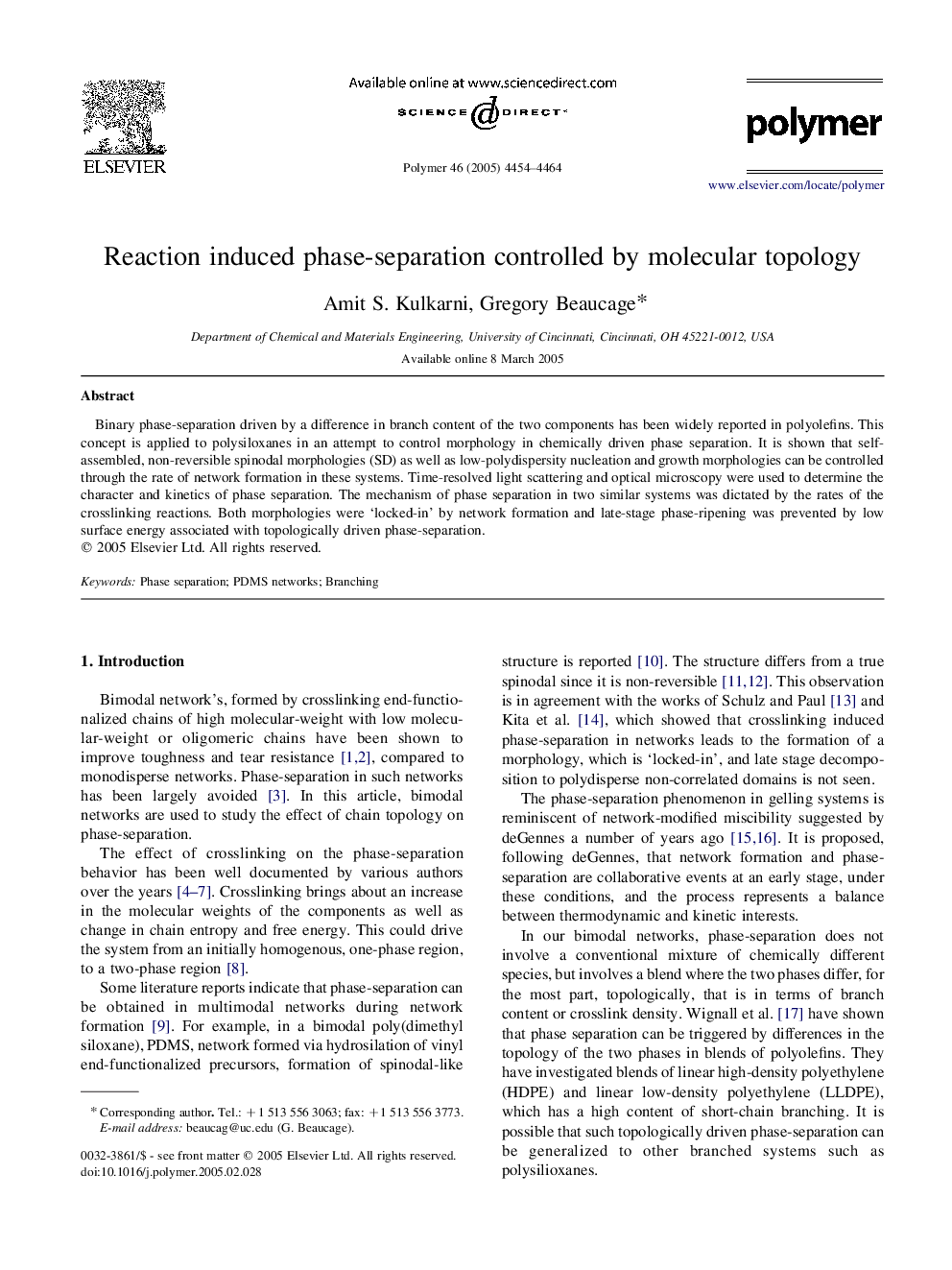| Article ID | Journal | Published Year | Pages | File Type |
|---|---|---|---|---|
| 5191899 | Polymer | 2005 | 11 Pages |
Abstract
Binary phase-separation driven by a difference in branch content of the two components has been widely reported in polyolefins. This concept is applied to polysiloxanes in an attempt to control morphology in chemically driven phase separation. It is shown that self-assembled, non-reversible spinodal morphologies (SD) as well as low-polydispersity nucleation and growth morphologies can be controlled through the rate of network formation in these systems. Time-resolved light scattering and optical microscopy were used to determine the character and kinetics of phase separation. The mechanism of phase separation in two similar systems was dictated by the rates of the crosslinking reactions. Both morphologies were 'locked-in' by network formation and late-stage phase-ripening was prevented by low surface energy associated with topologically driven phase-separation.
Keywords
Related Topics
Physical Sciences and Engineering
Chemistry
Organic Chemistry
Authors
Amit S. Kulkarni, Gregory Beaucage,
